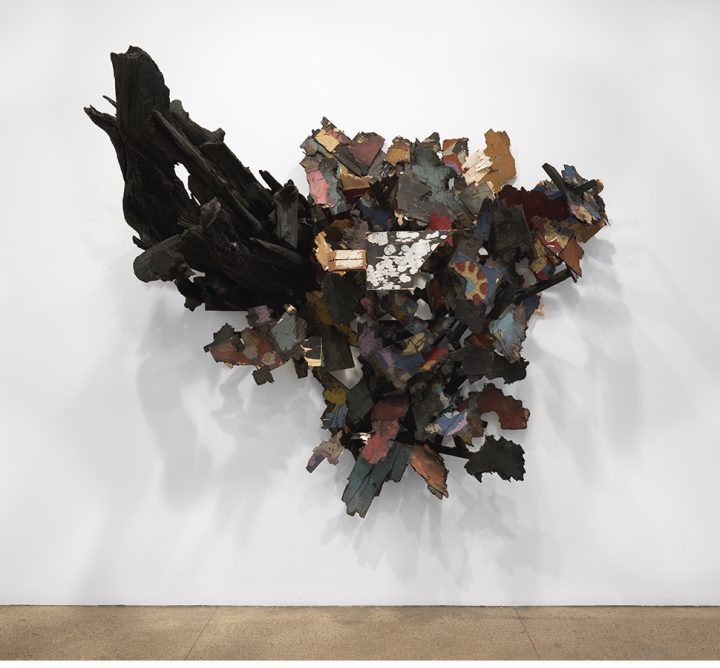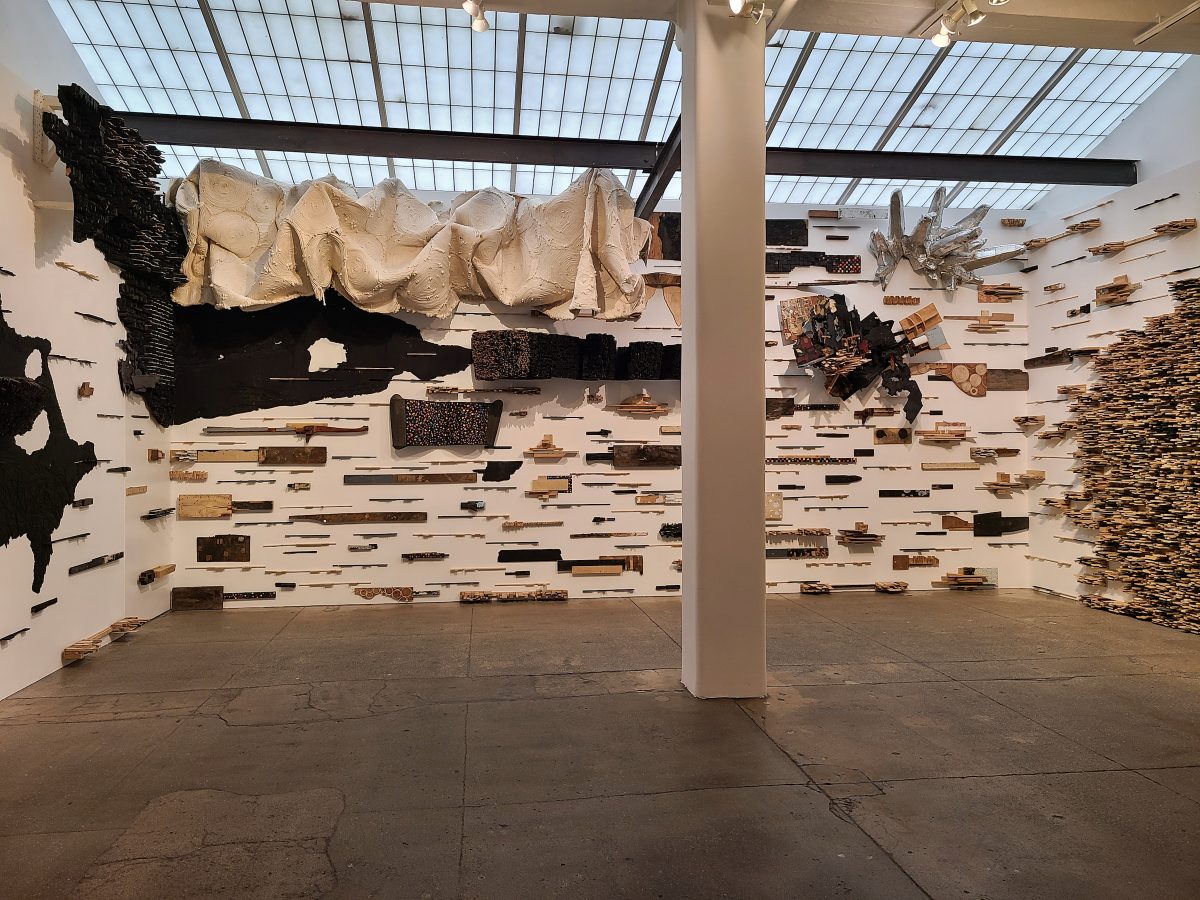
Many years ago, when I spent a couple summer months backpacking in Europe, I visited an art space in Berlin, the Hamburger Bahnhof an old, repurposed train station made into a contemporary museum. The exhibition on display combined the work of Anselm Kiefer and Joseph Beuys. I had seen Beuys’s stuff before in galleries in New York and wasn’t particularly impressed, but the Kiefer was new to me. Seeing them together stretched out into the far recesses of the enormous gallery space — Beuys’s iron-belted bales of hay, and from Kiefer what looked like massive books haphazardly tumbled on top of each other — the work made sense to me. In that moment I realized that their work needed room to breathe, and thus come alive to my eyes.
I was reminded of that feeling seeing Leonardo Drew, the artist’s current solo exhibition at Lelong Gallery. Drew is an artist who has consistently been more visually enthralling than Kiefer and Beuys were to me at that first sharp intake of breath more than 20 years ago. Of the work I have seen of his, Drew invents structures made primarily of wood, wood that is painted, patinaed, cut, glued, stacked, chunked, and wrenched into formations that are poetically majestic — Xanadus of timber.

In the larger of the two gallery spaces at Lelong, Drew has installed his piece “Number 305” (all pieces 2021) a mixed media agglomeration of wood, metal, and what looks like textile and floor tiles. (I find out later that aluminum, plaster and a confection made of white cotton cord also are included.) I might say the piece “begins” with a propulsive ruction of black wood in one corner, perhaps because it makes me think of the Big Bang. From there the piece morphs into a barrage of closely packed mid-brown kindling, and on the back wall, directly across from the gallery entrance the pieces separate out to become a flotilla of plank creatures caught in migratory flight. Moving to the left, the adjacent wall looks a monochromatic closeup of the inky blobs of a Rorschach test with bits of black shelving here and there. There are several contemporary artists who, like Drew move between the infinitesimally small and the mountainous, and are able to construct entire worlds to lose myself in — Louise Nevelson, Cornelia Parker, and EV Day come to mind. But Drew is able to construct whole galaxies with separate and distinct planetary bodies within them.

Some of these discrete bodies are installed in the smaller gallery towards the front of the gallery, for example “Number 304” which might be the view of a city scape from a mile directly above it. It might be, except that the tall “buildings” that could be skyscrapers are all covered in black garnet stones — a city of permanent twilight. And looking closer I see that around the city is actually a kind of archive of handwritten sketches, notes, diagrams and maquettes, pinned and glued to white paper. It’s thrilling to go from the macro to the micro and back again in every piece in the show.

The only caveat is that the show feels a too crowded and condensed, like this exhibition could use some more acreage to really convey the feeling of standing at a doorway leading to a universe that isn’t cold and dark and entropic, but is sparkling with abundant energies and worlds to chance upon.
The exhibition Leonardo Drew continues at Galerie Lelong (528 West 26th Street, Chelsea, Manhattan) though October 23.
0 Commentaires